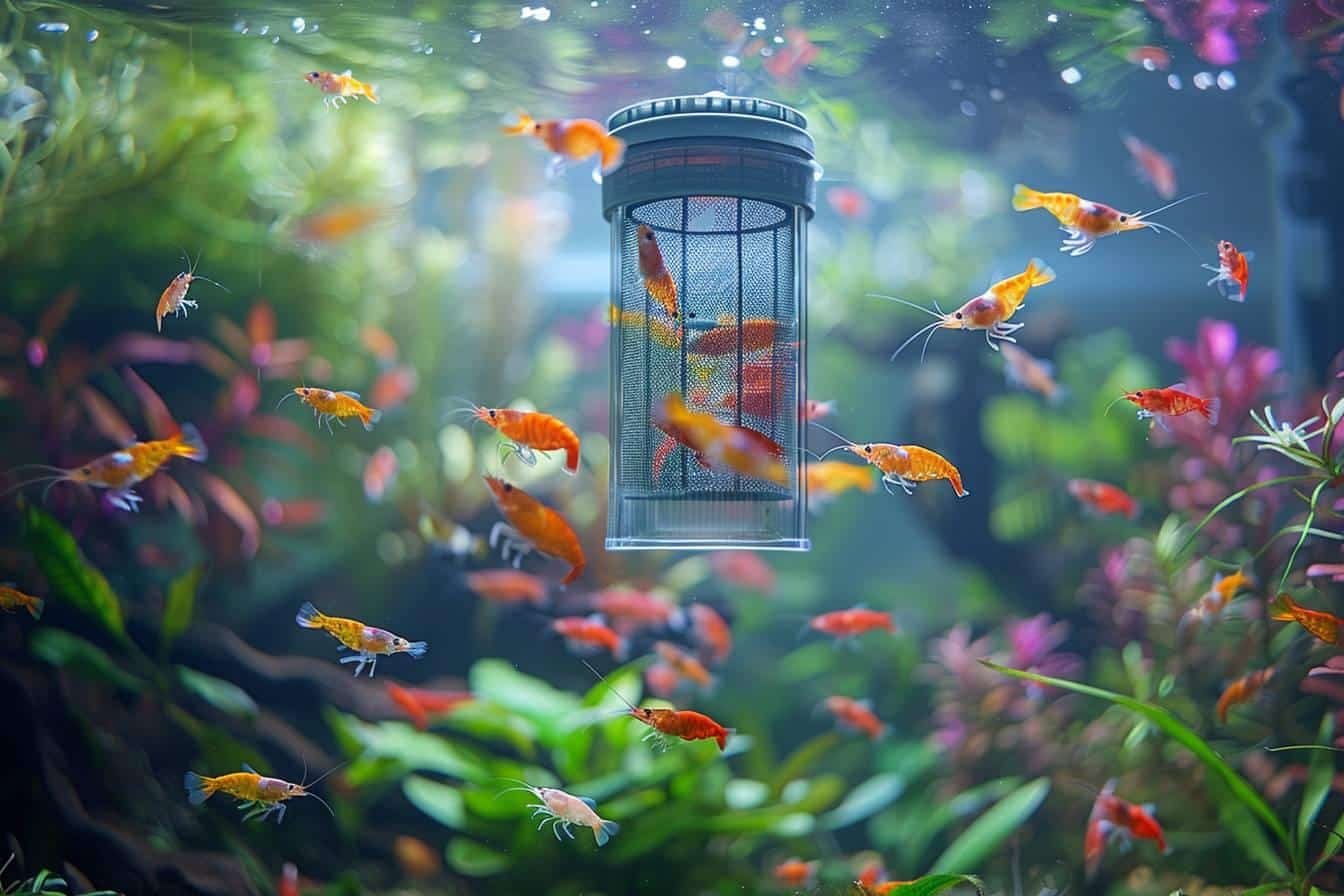The article in brief
This article explores the delicate cohabitation between Cap Lopez killis and shrimp in aquariums. Here are the key points to remember:
- The Cap Lopez killi is a Central African fish measuring 4 to 8 cm with a marked sexual dimorphism
- Carnivorous and a good jumper, it lives in acidic fresh water and enjoys the dense vegetation
- Living with shrimp is a challenge riskykillis may consider them as prey
- Separate aquariums are recommended for ensuring well-being of both species
- A rigorous maintenance and the right conditions are essential for these demanding fish
Ah, the killis Cap Lopez and prawns ! This is a subject that has fascinated me ever since I took over responsibility for the aquarium department. Let me tell you about this fascinating aquatic story that combines beauty and challenges. Let's dive into this captivating world together!
Characteristics of the Cap Lopez killi: a jewel of Central Africa
The Cap Lopez killi, from its scientific name Aphyosemion australeis a little jewel native to Central Africa. I was lucky enough to observe these marvels in their natural habitat during a trip to Gabon. Believe me, it was a breathtaking sight!
Appearance and sexual dimorphism
These small fish measure between 4 and 6 cm on average, with the largest specimens reaching up to 8 cm. Sexual dimorphism is striking:
- The males have a dark red-brown coat with magnificent green iridescence. Their fins, extended by filaments, make them veritable aquatic dancers.
- The females are more discreet, with a dull pink-brown hue punctuated by a few touches of red.
Behaviour and habitat
In the wild, these small killis Cap Lopez live in small groups in shallow acidic waters. They love to hide amongst the dense vegetation. Beware, they are excellent jumpers! I once found one of these little tricksters on the floor of the pet shop. Luckily, I was able to get it back into the water in time!
Feeding and reproduction
Carnivores at heart, these fish feast on worms, crustaceans and insects. In an aquarium, a varied diet is essential. As for reproduction, it is oviparous, with the eggs laid in the vegetation. It's a real pleasure to observe this natural process!
Cohabitation with shrimp: an aquarist's challenge
Now, let's talk about the cohabitation between Cap Lopez killis and prawns. This is where it gets tricky, my friends!
Risks and precautions
I won't hide the fact that cohabitation between these two species is tricky. Cap Lopez killis, being carnivorous, are likely to consider your pretty prawns as a delicious meal. I've seen more than one novice aquarist make this mistake. The result? Stressed shrimp and overfed killis!
Alternatives and solutions
If you absolutely must have these two species, here are a few tips:
- Opt for a larger aquarium, with plenty of hiding places for the shrimps.
- Choose adult-sized prawns, which are harder for killis to swallow.
- Make sure your killis are well fed to reduce their predatory behaviour.
However, the best solution is to dedicate separate aquariums to them. This is what I always recommend to my customers who are concerned about the well-being of their little aquatic protégés.
Maintenance and filtration
Whether you opt to keep them together or in separate aquariums, maintenance is essential. For shrimp in particular, a filter suitable for shrimp aquariums is essential for maintaining clear, healthy water. Don't forget regular water changes with 20-30% to keep your little friends in tip-top shape!

Ideal layout for killis Cap Lopez
Creating the perfect little paradise for your Cap Lopez killis is an art I've perfected over the years. Here is a summary of the ideal conditions:
| Parameter | Recommended value |
|---|---|
| Temperature | 22-26°C |
| pH | 6-6.8 |
| Type of water | Sweet and sour |
| Minimum volume | 20 litres |
To recreate their natural habitat, add peat and leaves to acidify the water. Dense vegetation will provide hiding places and spawning sites. And don't forget a tight-fitting lid for these little aquatic Houdinis!
Finally, raising Cap Lopez killis is an exciting adventure that demands attention and know-how. Although cohabitation with shrimp is tricky, each species deserves its own space in which to flourish. With the right care, you can enjoy the beauty of these African jewels for around 3 years. So, are you ready to dive into this aquatic adventure?
External sources :
wiki aquaculture
wiki fish farming
